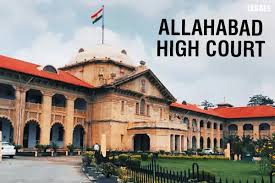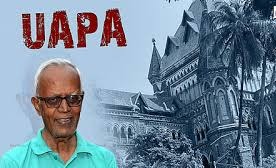C.Y. Somayajulu, J.@mdashClaimant in O.P.No.26 of 1996 on the file of the Motor Accidents Claims Tribunal-cum-District Judge, Medak, preferred this appeal dissatisfied with the compensation awarded to him by the Tribunal.
2. The case of the appellant is that when he was driving the auto bearing No.AP-10-T-934 belonging to the third respondent and insured with the fourth respondent and reached near Bidar Cross Roads, vehicle bearing No.AP-11-T-8499 belonging to the first respondent and insured with second respondent, being driven in a rash and negligent manner, dashed against the auto, being driven by him, resulting in injuries and consequent permanent disability to him and so he is entitled to Rs.1,70,000/- as compensation from the respondents. Respondents No. 1 and 3 chose to remain ex parte both before Tribunal and this Court. Second respondent filed a counter contesting the claim of the appellant, inter alia, contending that the accident occurred due to the negligence of the appellant himself. Fourth respondent filed a counter, inter alia, denying insurance of the auto bearing No.AP-10-T-934 with them on the date of the accident.
3. In support of his case, appellant examined himself as PW-1 and marked Exs.A-1 to A-6. No oral evidence was adduced on behalf of the second respondent, but, Ex.B-1 was marked by consent on its behalf. No evidence either oral or documentary adduced by the fourth respondent.
4. The Tribunal held that the accident occurred due to the rash and negligent driving of the vehicle bearing No.AP-11-T-8499 and awarded compensation of Rs.10,000/- to the appellant. Dissatisfied with the compensation awarded to him this appeal has been preferred by the claimant.
5. The main contention of the learned counsel for the appellant is that the compensation awarded by the Tribunal is too meager as the Tribunal failed to take into consideration that appellant sustained two fractures, and was an inpatient for number of days and has suffered a permanent disability and so, the appellant is entitled to the entire compensation claimed by him. The contention of the learned counsel for the second respondent is that the Tribunal erred in holding that the accident occurred due to the negligence of the vehicle bearing No.AP-11-T-8499, and failed to keep in view the fact that appellant was driving the auto with nine passengers and had not even examined an independent witness to establish as to how the accident occurred, and in the circumstances of the case the Tribunal should have held that the accident occurred only due to the negligence of the appellant and exonerated the first respondent and consequently the second respondent from liability.
6. Though second respondent, being the insurer of the vehicle AP-11-T-8499 without obtaining permission u/s 170 of the Motor Vehicles Act, 1988 cannot take the pleas open to the owner, and question the correctness of the findings of the Tribunal in an appeal preferred by the claimant, after going through the record I find that the Tribunal apparently committed an error and based its finding on issue No.1, without taking into consideration the documentary evidence available on record, and so by invoking the power vested in this Court under Rule 33 of Order 41 C.P.C., I wish to reappraise the evidence on record on the question as to how the accident occurred.
7. Ex.A-1, FIR issued in connection with the accident, shows that the report regarding the accident was given by one Penta Reddy alleging that he and eight others boarded the auto AP-10-T-934 at about 4-30 p.m. to go to their village and when the said auto reached near Bidar Cross Road, a vehicle bearing No.AP-11-T-8499, being driven at a high speed, dashed against the auto in which he and others were traveling, resulting in injuries to some and death of one person. Ex.A-3, certified copy of the charge sheet filed by the police against the driver of the vehicle bearing No.AP-11-T-8499 in connection with the accident, shows that 10 persons were traveling in the auto at the time of the accident. Though, auto rickshaw is not defined in the Motor Vehicles Act, 1988 ''Motor Cab'' is defined as a Vehicle permitted to carry not more than six persons excluding the driver on her or reward.
8. As per A.P. Motor Vehicle Taxation Act tax for an auto rickshaw is payable as per the seating capacity. The permit and tax paid in respect of the auto being driven by the appellant would disclose the seating capacity of the auto rickshaw being driven by the appellant at the time of the accident. But, for reasons best known to appellant, he did not either produce or take steps for production of the permit and tax paid by the owner of the auto rickshaw involved in the accident. So, an inference has to be drawn against the appellant, that as per the permit he cannot carry nine passengers in the auto. Therefore, it is clear that appellant overloaded the auto rickshaw being driven by him at the time of accident. Though Ex.A-3, charge sheet, shows that a panchanama of the scene of accident was conducted by the Investigating Officer, for reasons best known to the appellant, he did not produce the scene of accident panchanama to enable the Court to find out on which part of the road the accident actually took place. Since there was a head on collision between two vehicles and since the appellant was carrying nine passengers in the auto rickshaw, he also should have been negligent at the time of the accident, because had he been careful, he could have easily averted the accident. Usually in a case of a head collision, both the vehicles involved in the accident would be responsible for the accident as even if one of the driver is careful the accident can be averted. In the facts and circumstances of the case, it can be said that the accident occurred due to 50% negligence of the appellant, while driving auto bearing No. AP-10-T-934 and due to 50% negligence of the driver of the lorry bearing No.AP-11-T-8499 belong to the first respondent.
9. The evidence of the appellant as PW-1 is that he suffered fractures to his both legs and also to his left hand, and was admitted in Gandhi Hospital, where he was an inpatient for two months and underwent operations and that he used to attend hospital after discharge by hiring a jeep at the rate of Rs.700/- per trip and that prior to the accident he used to earn a net amount of Rs.200/- per day by plying the auto. During cross-examination he admitted that he did not make a mention in the petition about the fracture to his left hand and denied the suggestion that he suffered a fracture to one leg only and that he was not earning Rs.200/- per day and that he did not pay Rs.700/-per trip to the jeep for going to the hospital.
10. Ex.A-2, certified copy of the injury certificate of the appellant, shows that he sustained fracture of shafts of right and left femurs in the middle. So, it is clear that appellant suffered fractures to his legs only but not to his hand. Ex.A-4 bunch of out-patient chits show that the appellant was admitted into Gandhi Hospital on 19.10.1995 with IP No.31212 and was operated on 01.11.1995 for the fracture of the right femur and on 08.11.1995 for fracture of the left femur for IM nailings and was asked to come for a review after six weeks. Appellant produced eight x-rays which show that the fractures have united. IM nailings is seen in both the legs in the X-rays. Since appellant suffered two fractures and underwent two operations he can be awarded Rs.10,000/- towards pain and suffering.
11. Bunch of bills produced by the appellant show that he had spent Rs.1,394/- for purchase of medicines. Taking that they are only some of the bills, appellant can be awarded Rs.2,000/- towards purchase of medicines.
12. For reasons best known to the appellant he did not summon the case sheet relating to him, maintained in Gandhi Hospital, though, he said to be inpatient for number of days. The case sheet would have disclosed the condition of the appellant at the time of his discharge. Though case sheet is not summoned, since the appellant suffered two fractures, he must have been bed ridden for a period of not less than six months and so, he is entitled to attendant charges, which can be fixed at Rs.5,000/-. He is entitled to Rs.5,000/- towards extra nourishment and transport to the hospital but he is not entitled to Rs.700/- per trip as claimed by him.
13. That appellant was earning a net amount of Rs.200/- per day by plying the auto cannot be believed or accepted, because if really he was earning Rs.200/- per day, his annual net income would be more than Rs.72,000/- in 1995 and so he should have submitted income tax returns and paid income tax. It is not the case of the appellant that he was submitted income tax returns or paid income tax. This apart, Rule 268 of A.P. Motor Vehicles Rules reads:
"The owner of every auto rickshaw shall maintain a Record Sheet, serially numbered in duplicate in a bound book in Form RSA with a copy to be kept in the Auto rickshaw"
14. Form RSA contains the details of the time and trips made by the auto. That book in Form RSA is not produced by the appellant. Since appellant is a driver of the auto, his net earnings can be taken as Rs.2,500/- per month and so he is entitled to loss of earnings for six months i.e., Rs.2500 X 6 = Rs.15,000/-.
15. Since the x-rays of the appellant disclose that his fractures have united and since there is no medical evidence on record to show that appellant suffered any disability or permanent disability as a result of the fractures sustained by him in the accident, appellant is not entitled to any amount towards continuing permanent disability. But, since the appellant might be having some discomfort, because of the IM nailing and since he has to undergo operations to get the nails removed, Rs.15,000/- can be awarded towards future operation charges. Thus, the appellant is entitled to Rs.57,000/- as compensation for the injuries suffered by him in the accident.
16. Since the accident occurred due to 50% negligence of driver of the vehicle belonging to the first respondent and insured with the second respondent, as seen from Ex.B-1, respondents No.1 and 2 are liable to pay 50% compensation payable to the appellant.
17. There is no evidence on record to show that the auto being driven by the appellant at the time of accident was insured with the fourth respondent. If the auto is insured with the fourth respondent and if the insurance covered the risk of the auto driver, appellant would be entitled to receive 50% of the compensation awarded from the fourth respondent by establishing that auto is insured with fourth respondent, as per the terms and conditions of the policy of insurance. The point is answered accordingly.
18. In the result, the appeal is allowed in part and an award is passed for Rs.28,500/- in favour of the appellant against respondents No.1 and 2 with interest @ 12% p.a. on Rs.5,000/- from the date of petition till the date of deposit in the Court and with interest @ 9% p.a. on Rs.23,500 from the date of award of the Tribunal till the date of deposit with proportionate costs in the trial Court. On establishing that the auto bearing No.AP-10-T-934 was insured with the fourth respondent by the date of accident i.e. on 19.10.1995 and that insurance covers risk of the driver of the auto also, appellant can recover Rs.28,500/- from the fourth respondent with interest as specified above. Parties are directed to bear their own costs in this appeal.

